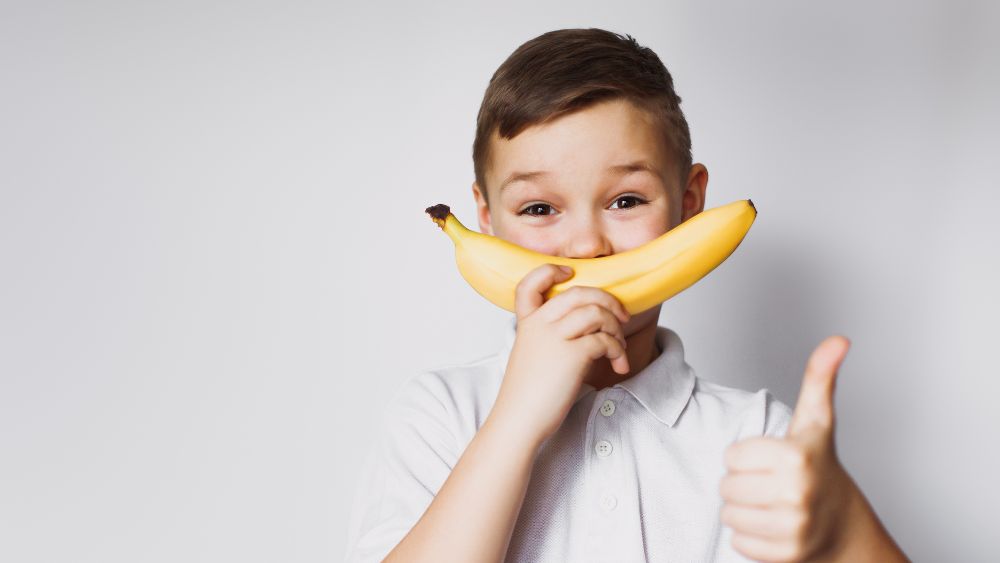
Easy biogas experiment for kids
As Aotearoa New Zealand looks to transition to renewable gas, there’s a lot of talk about biogas and hydrogen. But what is renewable gas and how will it energise our homes?
What is renewable gas?
It’s a clean energy source that doesn’t produce any additional emissions when used. It can be used for cooking, hot water and heating – just like today’s natural gas –so in the future you should be able to choose gas that works towards a healthier planet.
When you think of renewable energy, the first thing you think of might be wind, water or the sun? Did you know that food waste such as fruit and vegetable scraps have the potential to create energy too? That’s right, your decomposing kitchen rubbish can become a source of renewable power. When organic matter (such as fruit and vegetable scraps) starts to break down or decompose, it creates two gases – methane and carbon dioxide. This is biogas, a renewable energy source.
In this easy experiment for kids, we show you how food waste produces gas during decomposition to create biogas.
You can use any fruit or vegetable scraps for the experiment. We’ve used some common household fruit and vege to create our experiment but feel free to change it up. Maybe potato or carrot peels would work too
We’d love to see how you’re experimenting at home, make sure to share yours on Instagram and tag @thegashubnz.
Before you begin
Before you get started, make a few predictions about what you think might happen:
- Which food scraps do you think will create the most biogas?
- What will happen to the food scraps throughout the week?
- What do you think is going to happen in our water bottle and balloon?
Easy Biogas experiment
Prep time: 15 minutes
Active time: 20 minutes
Experiment time: 7 days
Total time: 7 days, 35 minutes
For this experiment, you need a few simple materials, most of which can be found around your home and most importantly, a little patience. You can try all five options or simply pick a few. You could also do a control bottle (a bottle that won’t show any results so you can see the other bottles progress) filled with just water.
Materials
- 2-5 empty bottles (250-600ml) – glass or plastic water or soft drink bottles will do
- 2-5 balloons
- Water (enough to fill each bottle)
- 1-2 banana peels, chopped (the riper the better)
- 1-2 orange peels, chopped
- ½ cup blueberries, mashed
- 1 cup lettuce, chopped
- ½ cup onion, chopped
Instructions
- Prepare the bottles. Wash the bottles ready for the experiment. Tip: You may also want to use a felt tip pen and label each bottle according to the food scraps you’ll be using.
- Prepare the food scraps. Chop the banana peel, orange peel, onion and lettuce. In a bowl mash the blueberries. Tip: The smaller the pieces the faster the food will decompose.
- Insert each of the different food scraps into the different bottles, making sure to keep each variety of vegetable or fruit scrap separate.
- Fill the rest of the bottle with water - make sure you fill as close to the neck as possible to avoid space for air.
- Place an uninflated balloon over the mouth of each bottle.
- When all the bottles are ready, place them in a sunny spot of your house where they are out of the way. Leave the bottles undisturbed for 7-10 days. Make sure all the bottles are in the same location, so they are exposed to the same temperature. Tip: Higher temperatures help to speed up the decomposition process, which creates the gas).
Remember to recycle
The great thing about this experiment is it’s recyclable when you’re done.
Bio bottle science kit
If you’ve got one of our Bio bottle experiment kits, make sure you recycle the bottle and balloon. To recycle the bottle, remove the contents of the experiment (into a composting bin if you have one) and wash. Once clean, you can reuse for another purpose or pop in your council recycling bin.
The Gas Hub eco balloon is made from recyclable material so this can be recycled too! To recycle The Gas Hub balloons, deflate the balloon and then cut into thin strips. The balloon can now be composted. They can take six weeks to several months to break down so give them they time they need. Tip: Natural latex is photo-degradable, so leaving the strips of the balloon in the sun as long as practical can help break down the balloons faster.
Please note, not all balloons are recyclable. Our branded balloons are made of natural latex which means they are.
DIY Biogas experiment
Most soft drink bottles are recyclable and can be popped in your council recycling bin, but please check your bottles first. To recycle the bottle, remove the contents of the experiment (into a composting bin if you have one) and wash. Once clean you can reuse for another purpose or recycle.
For other bottles and balloons, please check their recycling options.
Ready to connect?
Check out the connection process, to know what choices you'll need to make as part of getting connected to natural gas.
Submit your natural gas connection application today. Our customer team will then ring you to confirm a few more details and progress your application.
Want to know more?
If you've had a good look around our website and still have questions let us know what you'd like more information about.
